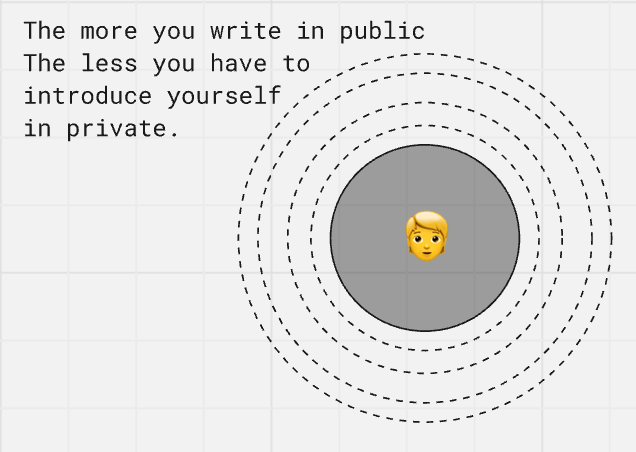- Refining VC
- Posts
- Three Steps to Build Your Public Presence
Three Steps to Build Your Public Presence
The more we write in public, the less we have to introduce ourselves in private.
Every week, VCs introduce themselves to dozens of strangers.
Founders in pitch meetings. LPs in fundraising calls. Potential hires in recruitment conversations. Each time, you explain your thesis, your approach, your differentiation - often in poorly-lit Zooms and noisy conference rooms.
And each time, it rarely comes out quite right.
The Introduction Tax
This constant reintroduction creates what I call the "introduction tax" - the time and energy spent establishing baseline context before you can have meaningful conversations.
But what if there was a way to skip this tax entirely?
The more we write in public, the less we have to introduce ourselves in private.
When we write in public, we can advance those conversations by moving beyond the basics faster. The quality of our conversations – and our conversational partners – improves when we share our opinions in public writing and give others something to respond to.
One emerging manager I work with observed that after six months of consistent publishing, their first meetings with founders shifted dramatically. Conversations now begin with "I read your Linkedin post about AI verticals" - not "So, tell me about your fund."

No One Has Any Idea What You're About
Many VCs operate under a dangerous assumption: that founders, LPs, and peers have some baseline understanding of what makes their fund different.
The truth (especially for EMs) is humbling: They don't.
Unless you tell them.
It’s kinda liberating… You have the opportunity to shape how people understand your firm from the ground up, without having to overcome preconceptions.
But it requires deliberate work to clarify and broadcast your story.
Lead With Vision, Not History
When VCs introduce themselves, they typically follow a predictable formula:
Where they worked before
Notable investments they've made
Their target sectors and stages
This background establishes something… but it rarely inspires or differentiates.
Introduce yourself through your future, not your past.
The most compelling VC narratives begin with a clear vision of the future they're working to create. The specific trends they're betting on, and more importantly what the world looks like if they’re right!
Vision = attracts founders who share your outlook.
Credentials = credibility to pursue this vision.
One fund I work with completely restructured their website to open with their thesis on how AI will transform healthcare delivery, rather than their partners' impressive backgrounds. The result? A dramatic increase in inbound inquiries from founders working specifically on that intersection - and far fewer general AI pitches.
Building Your Public Narrative: Three Practical Steps
Identify your repeated explanations - What do you find yourself explaining in every first meeting? These topics are your first candidates for public content.
Start with "The world according to [Your Fund]" - Write a single piece that articulates how you see the market evolving. This becomes your foundational narrative.
Create a calendar, not a campaign - Consistency matters more than perfection. Commit to publishing at a sustainable cadence rather than a flurry of content followed by silence.
The Compounding Returns of Public Writing
Like venture investments themselves, public writing operates on a power law distribution. The returns aren't linear - they compound over time as your ideas build upon each other and your audience grows.
The sooner you start, the sooner these returns begin accruing.
Laurie, Refinery Media